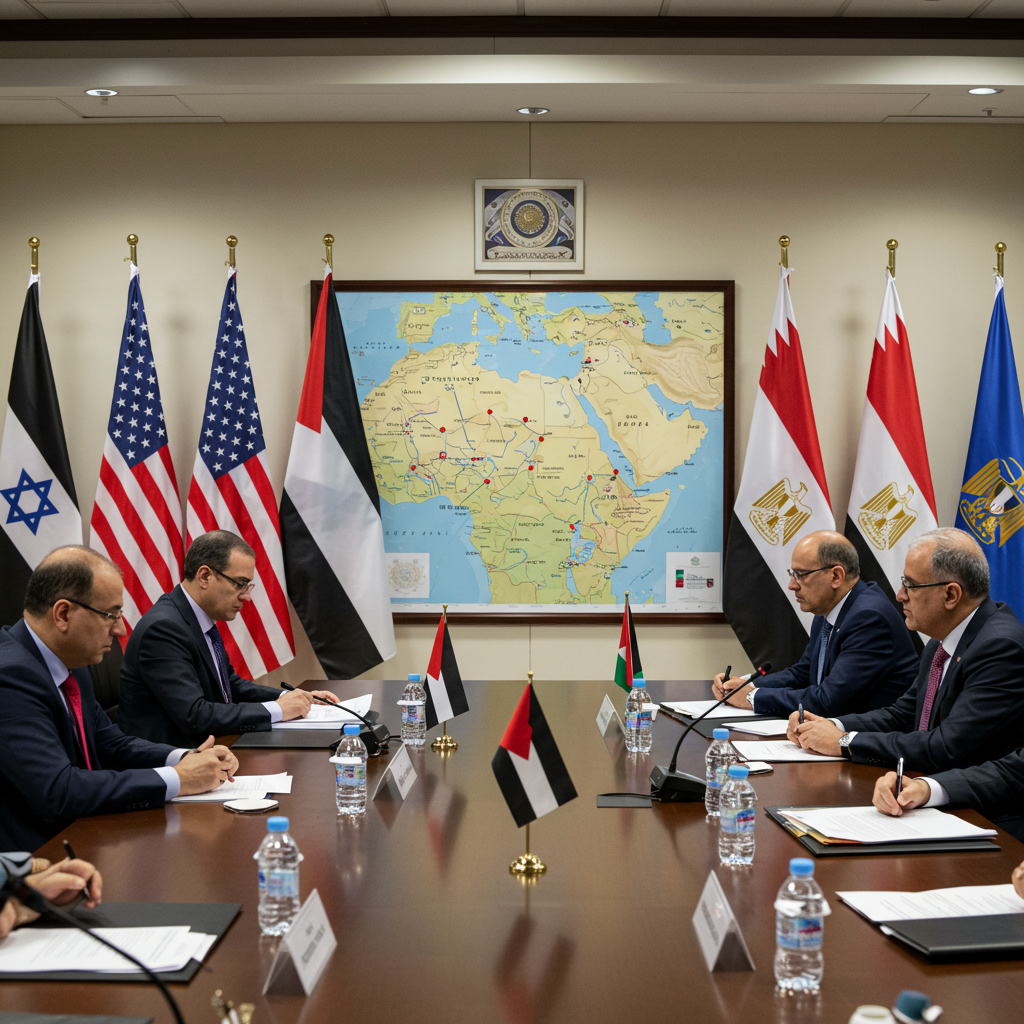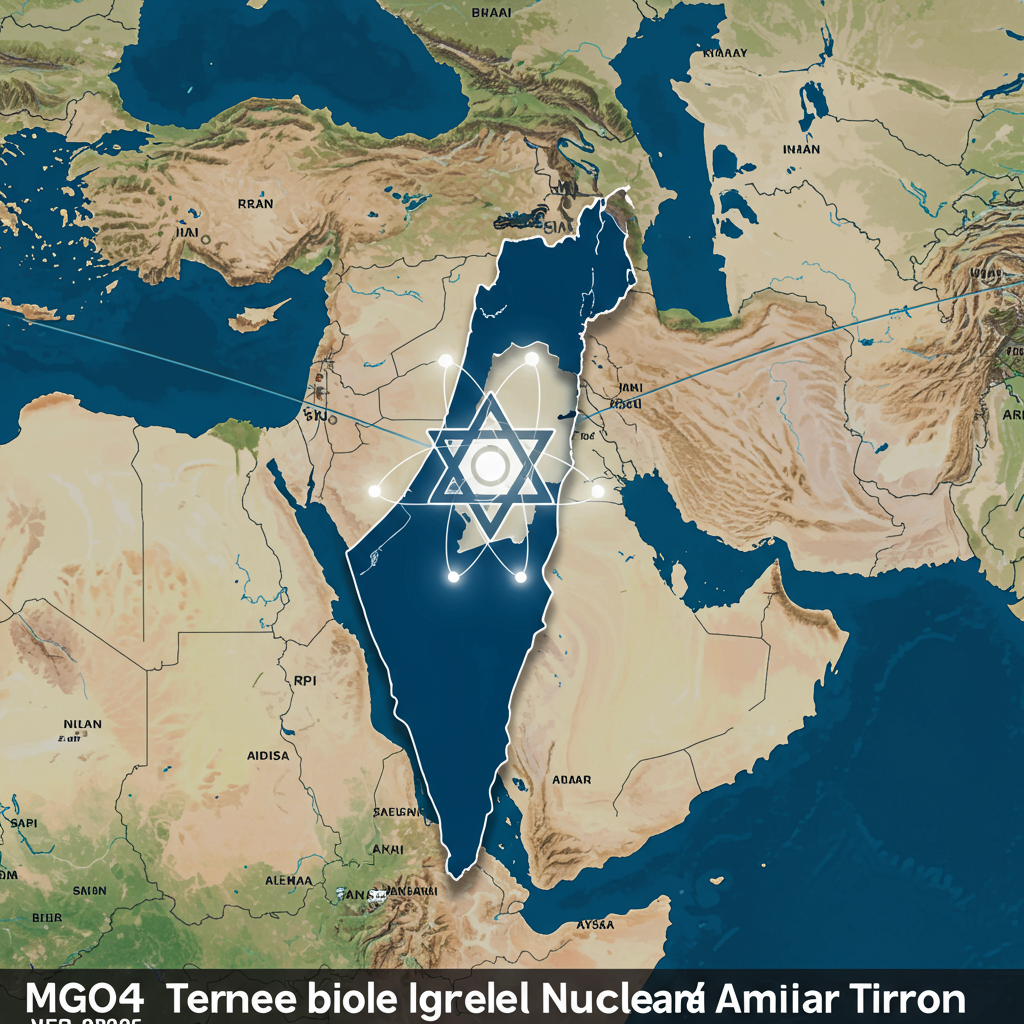Hopes for a breakthrough in the intense Gaza conflict gained momentum following a crucial announcement from hamas. The Palestinian armed group has delivered a “positive response” to mediators regarding the latest proposal for a ceasefire and hostage release deal spearheaded by the United States. Submitted to intermediaries Qatar and Egypt, Hamas characterized its reply as exhibiting a “positive spirit,” signaling a willingness to engage seriously in the complex negotiations aimed at pausing or potentially ending nearly two years of devastating hostilities.
This development comes after US President Donald Trump had publicly urged Hamas to accept the framework, describing it as a “final proposal” and warning the group that conditions would only worsen if they declined. Trump had also indicated that Israel had previously accepted the “necessary conditions” for a proposed 60-day truce period. While Hamas expressed readiness to immediately enter a new round of talks focused on implementation mechanisms, their response is not a full acceptance of the terms as initially laid out.
Key Elements of the Proposed Gaza Ceasefire Deal
The US-backed proposal under discussion outlines a structured approach designed to achieve a temporary halt in fighting and facilitate critical exchanges. At its core, the plan envisions a truce period expected to last 60 days.
A central component involves a phased exchange of israeli hostages held by Hamas for Palestinian prisoners incarcerated in Israeli jails. While precise numbers and sequences are subject to negotiation, the current framework reportedly includes the staggered release of 10 living Israeli hostages, alongside the return of the bodies of 18 deceased hostages. This exchange would occur across specific days within the 60-day truce period, potentially beginning with eight live captives on day one. Around 50 Israeli hostages are still believed to remain in Gaza, with estimates suggesting at least 20 are alive.
The humanitarian crisis gripping Gaza is also a critical focus. The proposal reportedly stipulates that “sufficient quantities” of humanitarian aid would immediately enter the enclave. Distribution efforts are anticipated to involve established international bodies like the United Nations (UN) and the International Committee of the Red Cross (ICRC).
Militarily, the plan includes requirements for a halt to all Israeli military operations once the agreement takes effect. This encompasses a daily pause in military and surveillance flights over Gaza, lasting at least 10 hours, potentially extended to 12 hours on days when hostage and prisoner exchanges are scheduled.
Hamas’s Conditions and Counter-Proposals
While signaling a “positive spirit,” Hamas has not given unconditional acceptance to the US-backed proposal. According to officials familiar with the discussions, Hamas has accepted the general framework but is pushing for several crucial amendments to the draft text. These requested changes highlight core disagreements that have complicated previous negotiation efforts.
A primary demand from Hamas is a binding guarantee from the United States. The group seeks assurance that if negotiations for a permanent ceasefire fail to reach an agreement during the proposed truce period, Israel will not resume its military operations. This reflects Hamas’s objective of converting a temporary pause into a lasting end to the war.
Another significant point of contention revolves around the withdrawal of Israeli troops from Gaza. The US proposal is believed to include phased pull-backs from specific areas in northern and southern Gaza. However, Hamas is reportedly insisting that Israeli forces return to the positions they held before the last ceasefire agreement collapsed in March 2025, when Israel resumed its offensive. This indicates a demand for a more extensive withdrawal than initially proposed.
The Sticking Point of Humanitarian Aid Distribution
Humanitarian aid distribution has emerged as a particularly sensitive and controversial issue, directly impacting ceasefire negotiations. While the US proposal aims to increase aid flow, Hamas has demanded that distribution be handled exclusively by the UN and its recognized partners, such as the Palestine Red Crescent Society.
Crucially, Hamas is calling for the immediate cessation of the aid distribution system currently run by the Gaza Humanitarian Foundation (GHF). This foundation is backed by Israel and the US, and its operations have been heavily criticized amidst reports of violence surrounding aid delivery points.
The UN human rights office recently stated it had recorded at least 613 Palestinian deaths in a single month while people were attempting to access humanitarian aid. Specifically, the UN documented 509 deaths near GHF distribution centers and 104 near other aid convoys, with a spokeswoman asserting it was “clear that the Israeli military has shelled and shot at Palestinians trying to reach the distribution points.” Medical charity Médecins Sans Frontières (MSF) reported similar incidents, including the death of a former colleague during alleged Israeli firing on people waiting for aid lorries, leading MSF to describe the situation as “systemic and deliberate starvation” and “carnage.”
The GHF has vehemently disputed the UN figures, dismissing them as non-credible and an attempt to “falsely smear” its work. The GHF insists there have been no violent incidents at or near its sites. The Israeli military has stated it is examining reports of harm to civilians near GHF sites but has labeled reports of “extensive casualties” as “lies.” The demand to end the GHF’s role underscores the deep distrust and conflicting narratives surrounding aid delivery mechanisms.
Hamas’s response also touches upon the duration and nature of future talks. While not demanding a fixed extension, the group reportedly believes negotiations must continue beyond the 60-day period if necessary, aiming for a “mutual and comprehensive agreement” rather than a limited truce. The proposal itself is understood to suggest that negotiations on ending the war would commence on the very first day of the temporary truce.
Reactions and Remaining Hurdles
Following Hamas’s communication to mediators, the focus has shifted to Israel and the United States’ assessment of the response. Israeli media reported that Israel has received the reply and is examining it. US officials are also reviewing the details of Hamas’s conditions and proposed amendments.
Despite Trump’s positive spin on Hamas’s response and Israel’s prior acceptance of the framework’s “necessary conditions,” significant obstacles remain. Israeli Prime Minister Benjamin Netanyahu has consistently maintained a public stance that stands in contrast to Hamas’s core demands. Netanyahu has repeatedly stated that he will not end the war until all hostages are released and Hamas’s military and governing capabilities are destroyed. This makes Hamas’s insistence on a guaranteed path to a permanent ceasefire a major point of friction.
Reports suggest Israel may be seeking written assurances from the US. These assurances could potentially allow Israel to resume military operations if its key demands, such as Hamas disarmament or the exile of its leadership, are not met during or after the truce. Israeli media speculate about a possible “side letter” from Trump authorizing Israel to “renew the fire” if it determines Hamas has not complied with the terms.
Meanwhile, the violence in Gaza continues unabated, even as diplomatic efforts unfold. The Israeli military has continued bombardment across the Gaza Strip. Gaza’s Hamas-run health ministry reported a significant number of Palestinian deaths in the 24 hours preceding Friday afternoon, including fatal strikes on tents housing displaced people in Khan Younis.
Witness accounts underscore the human cost of the ongoing conflict. A 13-year-old girl lamented the death of her brother in a strike, saying, “The ceasefire will come, and I have lost my brother? There should have been a ceasefire long ago before I lost my brother.” Another relative spoke of broken hearts and the desperate wish for the bloodshed to end.
An ICRC staff member was reportedly hit by a stray bullet at a field hospital in Rafah, highlighting the dangers faced by humanitarian workers. The immense scale of reported casualties since October 7, 2023, now exceeding 57,000 according to the Gaza health ministry, provides a grim backdrop to the high-stakes negotiations.
Pressure from Hostage Families
Adding to the urgency are the continuous efforts of families of the remaining hostages held in Gaza. In Tel Aviv, located relatively close to Gaza, families and their supporters have held rallies, including outside the US embassy branch office, pressing for a deal. Using banners like one featuring the US flag and the words “liberty for all,” they appealed directly to President Trump and Prime Minister Netanyahu.
Speakers at these events, including parents of hostages and individuals previously released from captivity, have powerfully articulated the need for a comprehensive agreement. Ruby Chen, father of an Israeli-American soldier killed on October 7 whose body is held by Hamas, urged Netanyahu to go to the US and “bring back a deal that brings all the hostages home.” A former hostage emphasized that only a “comprehensive deal” can secure the release of all remaining captives and contribute to a better future for the Middle East.
The fate of these individuals remains a primary concern for many Israelis, intensifying pressure on the government to reach an agreement despite the significant political and military challenges involved. Netanyahu has publicly vowed to secure the return of all hostages, reinforcing the domestic imperative driving Israel’s negotiation position.
The current diplomatic push represents a fragile moment in the protracted conflict. While Hamas’s “positive” response offers a glimmer of possibility, the detailed amendments they propose underscore the deep divisions that must be bridged. The success of this latest initiative hinges on the willingness of both sides, aided by mediators, to navigate these complex demands and counter-demands while the humanitarian crisis in Gaza continues to escalate and violence persists.
Frequently Asked Questions
What was Hamas’s key demand regarding the US ceasefire proposal?
A central demand from Hamas, according to officials familiar with the talks, is a guarantee from the United States that hostilities will not resume if negotiations for a permanent ceasefire following the truce period fail. Hamas is also pushing for Israeli troops to withdraw to positions held before the last ceasefire collapsed in March and for humanitarian aid distribution to be exclusively managed by the UN and its partners, not the US-backed Gaza Humanitarian Foundation (GHF).
What are the main points of the US-backed Gaza ceasefire plan being discussed?
The US proposal reportedly includes a 60-day truce aimed at halting military operations. Key elements involve a phased exchange: 10 living Israeli hostages and the bodies of 18 others for Palestinian prisoners held by Israel. The plan also calls for immediate entry of sufficient humanitarian aid into Gaza, likely facilitated by the UN and ICRC, and anticipates that negotiations for a permanent end to the war would begin on day one of the truce.
Why is aid distribution in Gaza a point of conflict in ceasefire talks?
Control over humanitarian aid distribution is contentious due to distrust and conflicting reports of violence. Hamas demands aid be distributed solely by neutral bodies like the UN, seeking to end the role of the Israel- and US-backed Gaza Humanitarian Foundation (GHF). Reports from the UN and MSF detail significant casualties among Palestinians trying to access aid, often near GHF sites, which they attribute to Israeli military actions. The GHF and Israeli military dispute these figures and claims, creating a major hurdle in agreeing on aid mechanisms.
—



